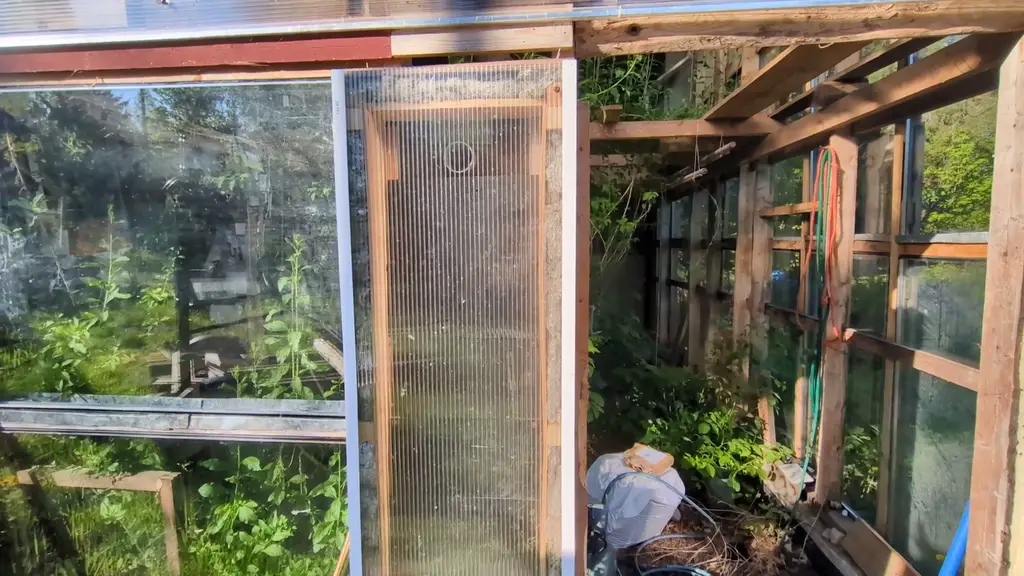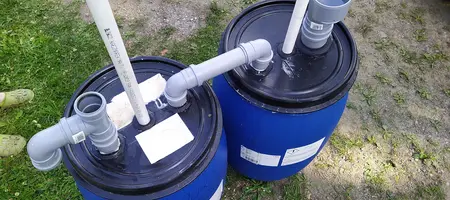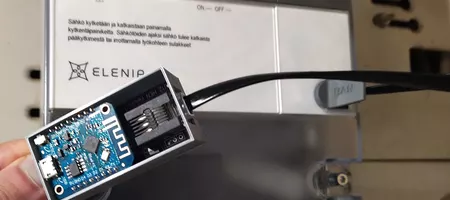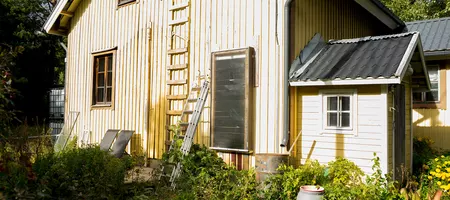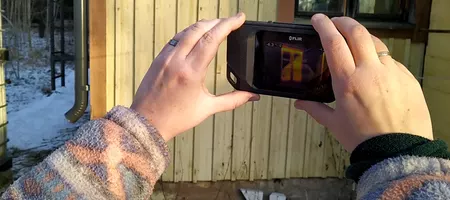Some time ago, I wrote about our solar air heater, which we attached to our house—and which has actually been working very well, aside from the air intake getting blocked. Solar air heaters are mostly passive systems, though sometimes they are active and use a fan to pull in air. My first one was a passive system; the second is an active one.
When I designed our indoor food forest, I considered installing floor heating. Since I wouldn’t be able to get the pipes in later, I laid them before planting—what a job that was. Fortunately, the floor is more or less the only spot on our premises with a high proportion of sand in the soil mix.
The pipes form a loop: starting at the front, running to the back, and returning again. In total, there are about 10 meters of pipe—not much, and definitely not an insulated system. The pipes were inexpensive, and I had to install a plastic lining anyway to protect the wall from the watering system and roots. So digging into the soil was necessary either way. The pipes have been in place since 2019, but essentially unused. In 2025, it was time to change that.
The original idea was to integrate a solar air heater. I began work on it after testing the first one in 2022. Unfortunately, I got sidetracked by some individuals in the Finnish Permaculture Association—costing me a lot of time and energy.
But in 2025, I returned to the unfinished project. The new solar air heater is now installed in front of the biogas shed, bridging the gap between the door and the window on the left. It’s connected via a fan to a polypropylene pipe (the loop). A DS18B20 temperature sensor is mounted in the upper part of the heater near the air outlet, and another sensor is located in the exit tube. When the temperature difference between these two points exceeds 10°C, the fan starts. It stops when the difference drops below 5°C.
To evaluate the system’s effectiveness, I’m comparing data from the biogas shed—particularly ambient temperature, soil temperature at different points, and the solar air heater’s temperature. So far, the air temperature at the exit is 1°C warmer than other test points.
Compared to the passive solar air heater, which can reach up to 80°C, the active version never exceeds 40°C. This may be due to the smaller size or the fan moving warm air away more quickly.
Let’s check the data again next year!

